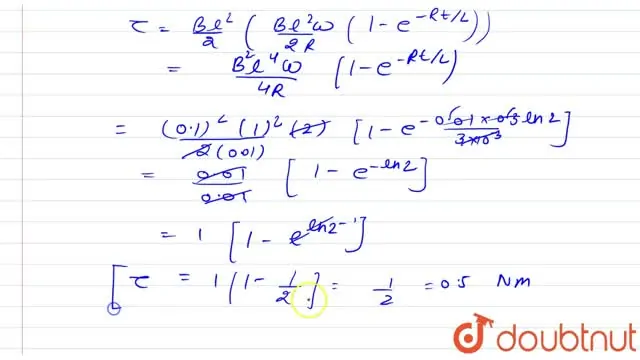The circuit shows a resistance, R=0.01Ω and inductance L=3mH connected to a conducting rod PQ of length l=1m which can slide on a perfectly conducting circular arc of radius l with its center at P. Assume that friction and gravity are absent and a constant uniform magnetic field b=0.1T exists as shown in the figure. At t=0, the circuit is seitched on a simultaneously an external torque is applied on the rod so that it rotates about P with a constant angular velocity ω=2rad/sec. Find the magnitude of this torque (inN-m) at t=(0.3In 2) second.

The correct Answer is:4
Step by step video & image solution for The circuit shows a resistance, R=0.01Omega and inductance L=3mH connected to a conducting rod PQ of length l=1m which can slide on a perfectly conducting circular arc of radius l with its center at P. Assume that friction and gravity are absent and a constant uniform magnetic field b=0.1T exists as shown in the figure. At t=0, the circuit is seitched on a simultaneously an external torque is applied on the rod so that it rotates about P with a constant angular velocity omega =2 rad//sec. Find the magnitude of this torque (inN-m) at t=(0.3In 2) second. by Physics experts to help you in doubts & scoring excellent marks in Class 12 exams.
Similar Questions
The diagram shows a circuit having a coil of resistance R=2.5(Ω) and inductance L connected to a conducting rod PQ which can slide on perfectly conducting circular ring of radius 10 cm with its centre at 'P'. Assume that friction and gravity are absent and a constant uniform magnetic field of 5 T exist as shown in Fig.
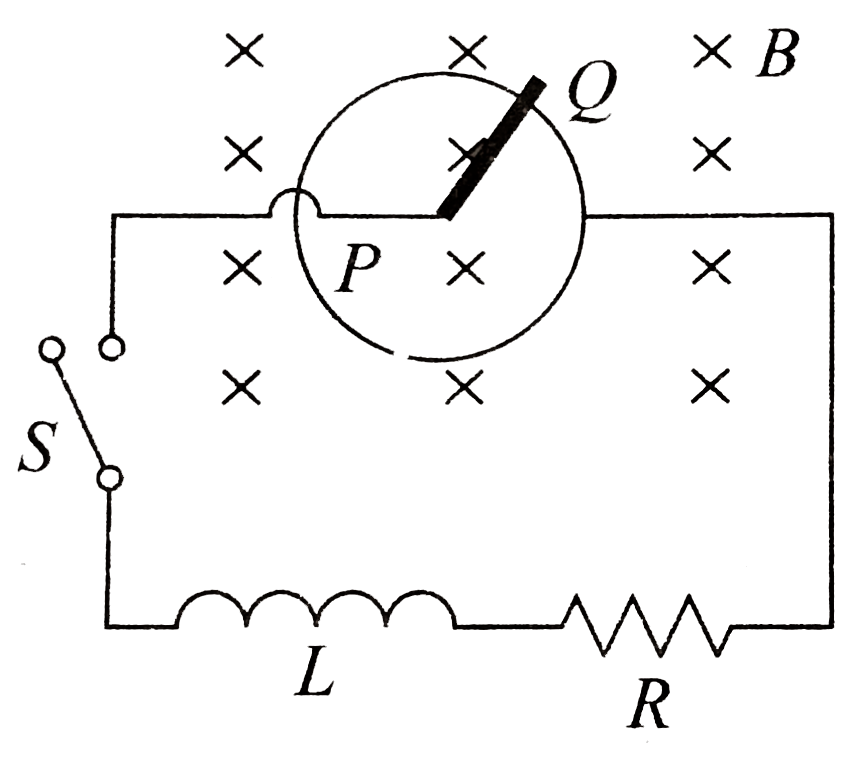
At t = 0, the circuit is switched on and simultaneously a time varying external torque is applied on the rod so that it rotates about P with a constant angular velocity 40rad/s. Find magnitude of this torque (in milli Nm) when current reaches half of its maximum value. Neglect the self-inductance of the loop formed by the circuit.View SolutionFigure shows a circuit having a coil of resistance R=2.5Ω and inductance L connected to a conducting rod of radius 10cm with its center at P.
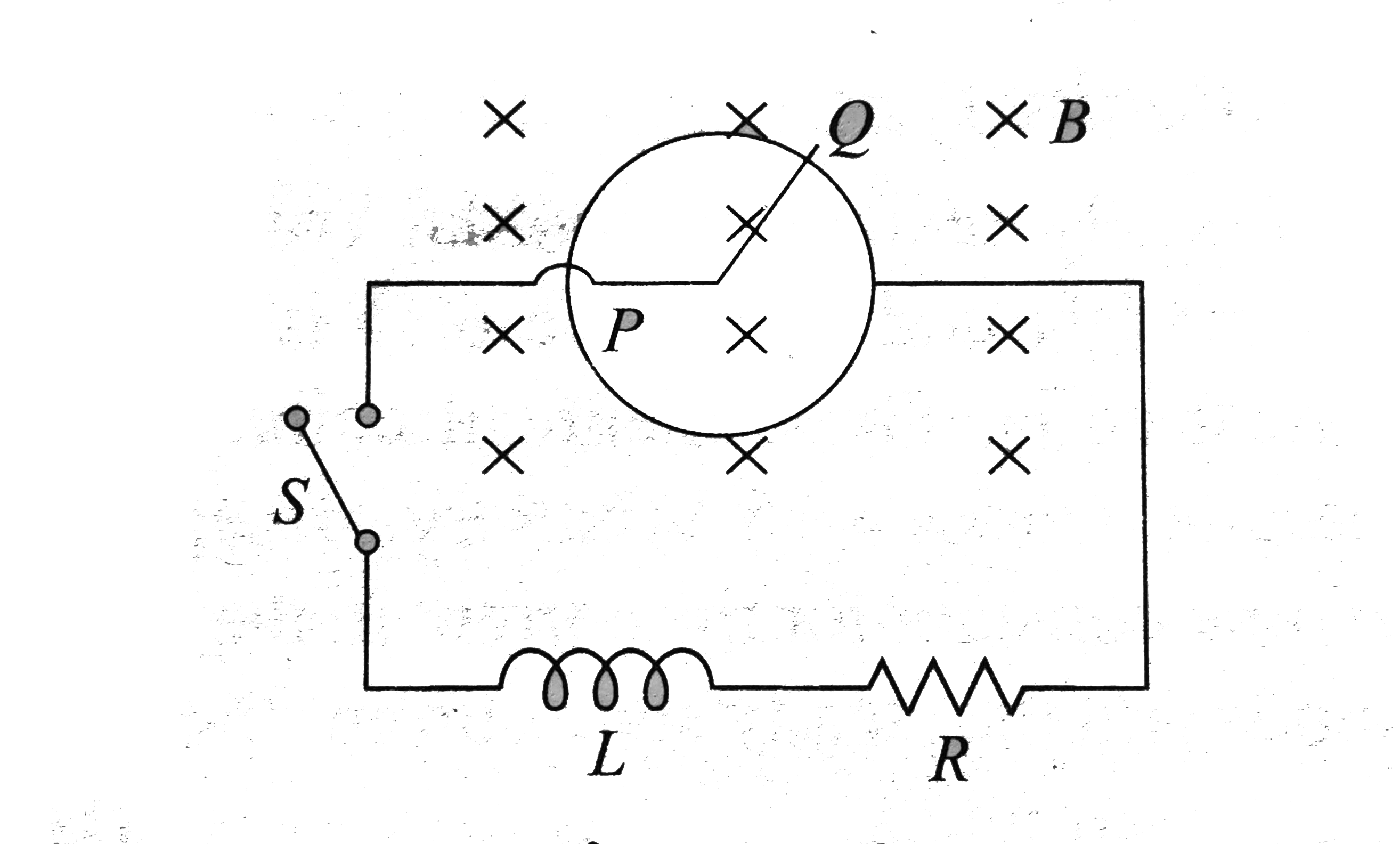
Assume that friction and gravity are absent and a constant uniform magnatic field of 5T exists as shown in figure. At t=0, the circuit is switched on and simultaneously a time-varying external torque is applied on the rod so that it rotates about P with a constant angular velocity 40rads−1. Find the magnitude of this torque (in mNm) when current reaches half of its maximum value. Neglect the self inductance of the loop formed by the circuit.View SolutionA resitance R=1kΩ connected to a conducting rod PQ that can slide on a conducting circular ring of radius 2m with center at P. A constant uniform magnetic field 10 Tesla exist as shown in figure. At t=0, switch 'S' is closed and simulaneously an external torque is applied on the rod so that it rotates with constant angular velocity 20rad/sec. The magnitude of power delivered by external is 20K Watt. Find the value of K. (Neglect the gravity, friction and self inductance of circular loop)
 View Solution
View SolutionA conducting rod of length l is rotating with constant angular velocity ω about point O in a uniform magnetic field B as shown in the figure . What is the emf induced between ends P and Q ?
 View Solution
View SolutionA small conducting rod of length l, moves with a uniform velocity v in a uniform magnetic field B as shown in fig __
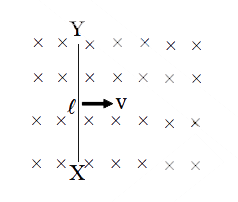 View Solution
View SolutionA metal rod of length l cuts across a uniform magnetic field B with a velocity v. If the resistance of the circuit of which the rod forms a part is r, then the force required to move the rod is
View SolutionA current carrying conducting circular arc which is making an angle 60° at its geometrical center is placed in a uniform transverse magnetic field B as shown in the figure. If radius of the arc is 50 cm, current in the wire is 2A and magnetic filed intensity is 2T, then the magnitude of magnetic force on the arc will be
View SolutionA conducting wire xy of lentgh l and mass m is sliding without friction on vertical conduction rails ab and cd as shown in figure. A uniform magnetic field B exists perpendicular to the plane of the rails, x moves with a constant velocity of
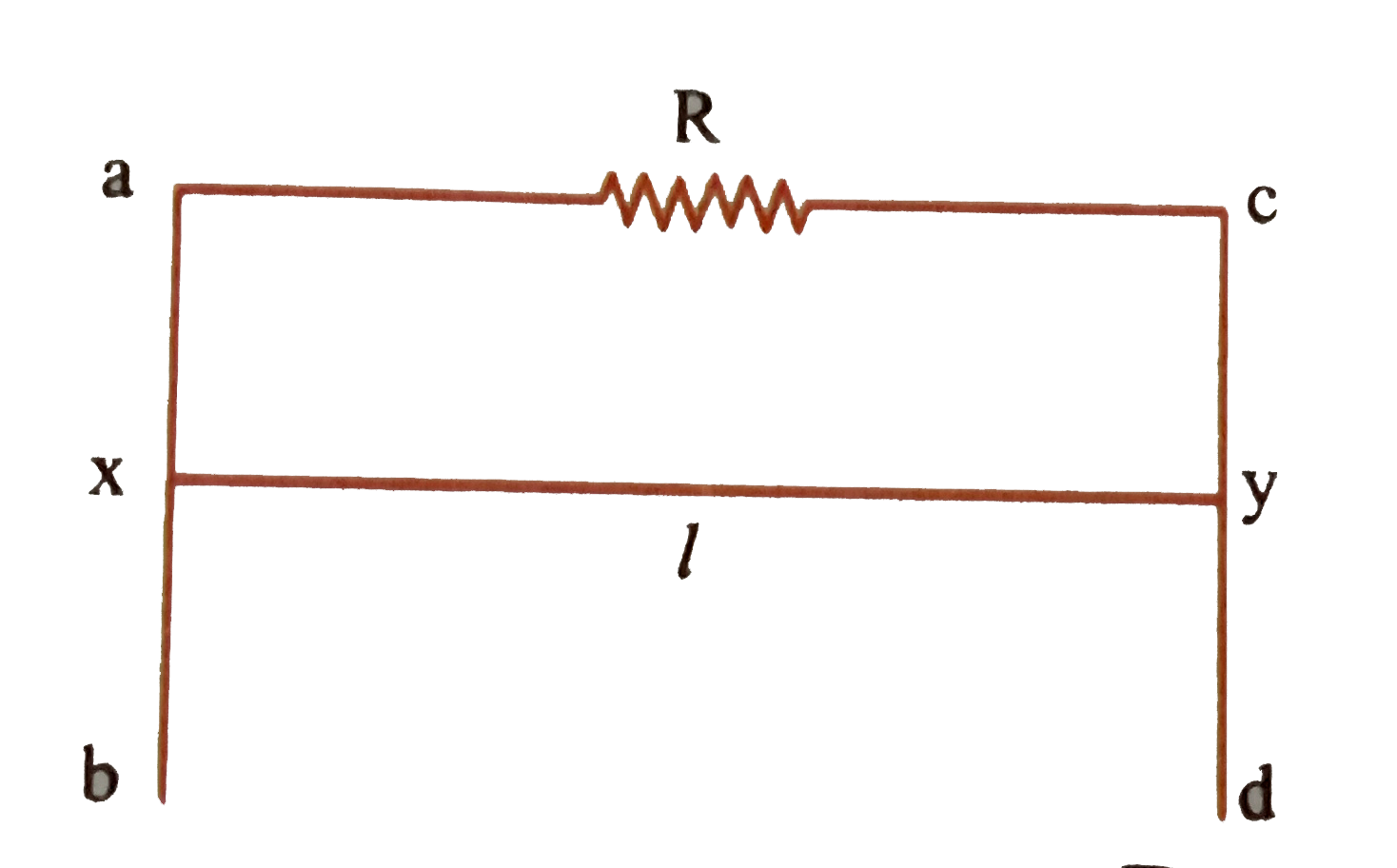 View Solution
View SolutionA conducting wire xy of lentgh l and mass m is sliding without friction on vertical conduction rails ab and cd as shown in figure. A uniform magnetic field B exists perpendicular to the plane of the rails, x moves with a constant velocity of
 View Solution
View SolutionAB and CD are fixed conducting smooth rails placed in a vertical plane and joined by a constant current source at its upper end. PQ is a conducting rod which is free to slide on the rails. A horizontal uniform magnetic field exists in space as shown in figure. If the rod PQ is released from rest then,
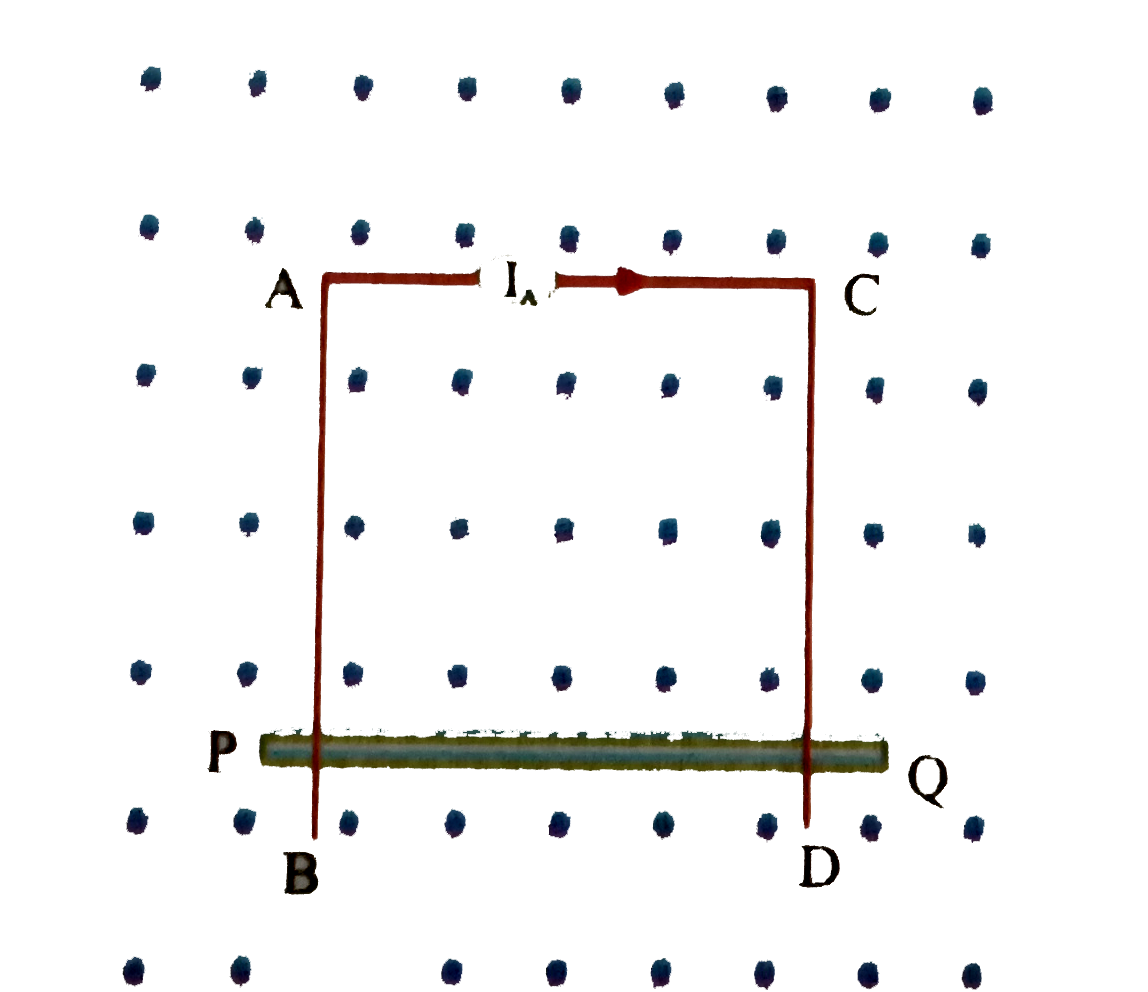 View Solution
View Solution

